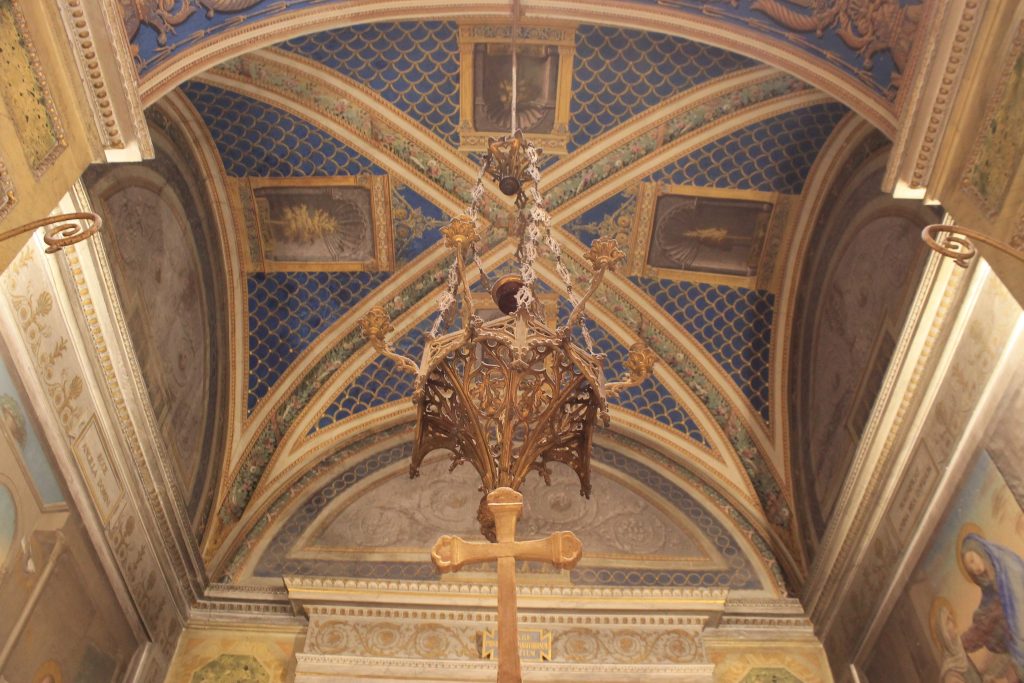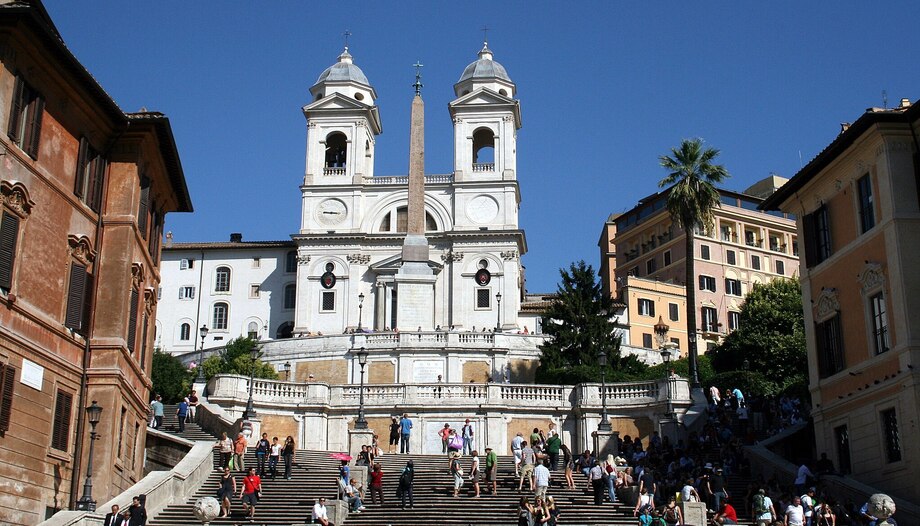Rome is full of places to visit, some more well-known and others less so. "Trinità dei Monti" certainly deserves to be known.
It is located on a viewpoint called the "PincioThe church, the cloister, two anamorphosis frescoes in the corridors of the cloister, a sundial (the so-called astrolabe), the refectory painted by the Jesuit Andrea Pozzo and the chapel of the "The Sundial of the Lord", the "The Church of the Holy Spirit" and the "The Church of the Holy Spirit".Mater Admirabilis".
The building was built between 1530 and 1570 by King Charles VIII of France for the Minims, a religious order founded by Francis of Paola (1416-1507).
Church
The church of "Trinità dei Monti".which dominates the Plaza de España with its two bell towers, was consecrated in 1594.
Like the convent It owes its origin to the spiritual help given by St. Francis of Paola to the King of France, Louis XI, who had called him to join him in Plessis-Lès-Tours (France).
In fact, in 1494, his son Charles VIII, grateful for the support received from his father, inaugurated on Mont Plessis the construction of a building intended to accommodate the French religious of the Order of the Minims.
The works lasted throughout the 16th century. From then on, this place would be considered "the Roman church of the Kings of France". In the year of the canonization of Francis of Paola (1519), the construction of the church and the convent was largely completed.
The church was initially built in Gothic style, with stones from the Narbonne region, with a single nave bordered on each side by a succession of six chapels, to which are added the two chapels of the transept. In the 18th century, some modifications were made and the original Gothic structures were removed.
Today, the church has 17 chapels, each of which bears the name of one of the families that were granted patronage in the 16th century. Its rich decorations make the church a "Trinità dei Monti"an extraordinary testimony of "Roman Mannerism".


An excellent example is the Altoviti chapel, named after the Florentine banker Gian-Battista Altoviti. The wooden altarpiece depicts the baptism of Christ and the frescoes on the vault, some scenes from the life of St. John the Baptist. There is also the Simonetta chapel, dedicated to St. Francis de Sales the year after his canonization (1665).
The scenes of his life have disappeared over time and today the dedication is to St. Francis of Paola and commemorates the founder of the Minims, the first inhabitants of the town. "Trinità dei Monti".
Another chapel is dedicated to Lucrezia della Rovere, as it was given to the niece of Pope Julius II in 1548. In the Bonfil chapel you can admire the famous "Deposition of the Cross" by Daniele da Volterra, a pupil of Michelangelo.
The convent
It is the seat of the community of the Sacred Heart and of the Monastic Fraternity of Jerusalem. The convent is a veritable treasure trove of works of art. A cloister houses a cycle of frescoes dedicated to the life of St. Francis of Paola and a gallery of portraits of the kings of France; while in the refectory, where the mendicant friars ate their frugal meals, there are frescoes with illusionistic effects created in 1694 by the Jesuit Andrea Pozzo, with the scenographic Wedding at Cana.
The large trompe l'oeil occupies all the walls of the room, while the vault is supported by false beams that seem to incredibly support its weight.
Anamorphosis
Two anamorphoses were painted on the walls of the cloister corridors. These are frescoes that, thanks to a surprising optical effect, change their appearance depending on the location.
Anamorphism is an optical illusion whereby an image is projected onto the plane in a distorted form, making the original subject recognizable only if the image is observed under certain conditions, for example, from a precise point of view or through the use of deforming instruments.
The authors were the Minim Fathers Emmanuel Maignan and François Nicéron and they represented Saint Francis of Paola. Moving in a straight line along the wall, the figure of the saint dilates and deforms until it disappears, to become a landscape animated by the story of Francis' crossing of the Strait of Messina.
The second anamorphosis, on the other hand, represents St. John trying to write the Apocalypse. But if you look at the painting from another point of view, it becomes a landscape with plowed fields and villages!
Chapel of the "Mater Admirabilis".
In the 19th century, the Sisters of the Sacred Heart, founded by St. Madeleine Sophie Barrat, obtained ownership of Trinità dei Monti. In 1844, a young novice, Pauline Perdreau, painted a fresco of the Virgin Mary in a corridor. This place was quickly transformed into a chapel as a result of the numerous graces received, as attested by the votive offerings that cover the walls.
The image took the name of "Mater Admirabilis"The image of the Virgin Mary dates back to the time of Pope Pius IX, who liked to come here to pray. The devotion to this image has made it present in all the schools of the Sacred Heart in the world.
Astrolabe
At "Trinità dei Monti" was not only art, but also science. Between the two anamorphoses is a complex and fascinating catoptric astrolabe, a sundial with a reflecting sphere. A small mirror in the window reflects sunlight, creating a luminous sphere that moves on the wall during the day. Four Latin inscriptions serve as "instructions for use", explaining the complex operation of the sundial.













